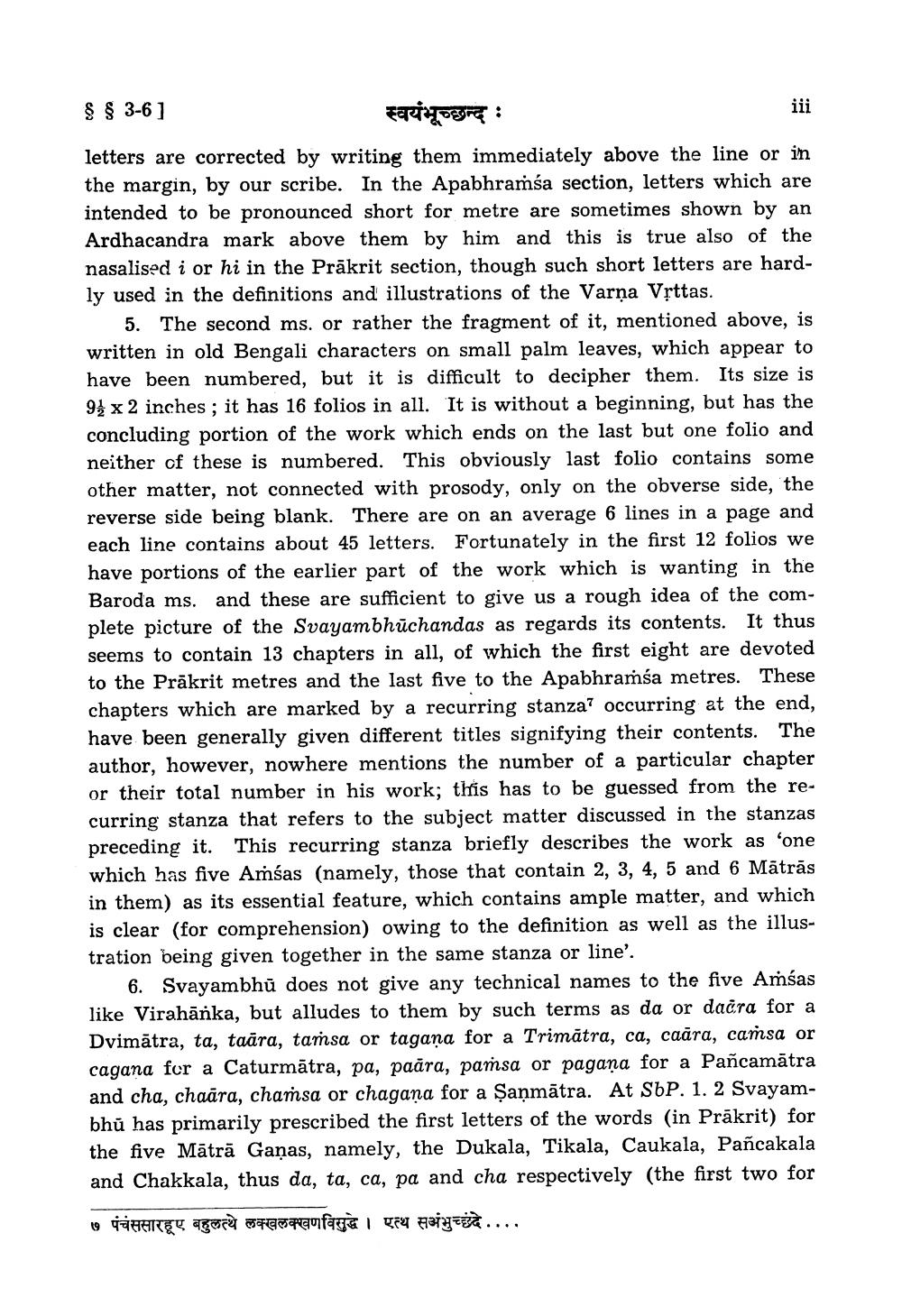________________
& § 3-6 ]
स्वयंभूच्छन्द:
letters are corrected by writing them immediately above the line or in the margin, by our scribe. In the Apabhramśa section, letters which are intended to be pronounced short for metre are sometimes shown by an Ardhacandra mark above them by him and this is true also of the nasalised i or hi in the Prākrit section, though such short letters ar ly used in the definitions and illustrations of the Varna Vrttas.
5. The second ms. or rather the fragment of it, mentioned above, is written in old Bengali characters on small palm leaves, which appear to have been numbered, but it is difficult to decipher them. Its size is 91 x 2 inches; it has 16 folios in all. It is without a beginning, but has the concluding portion of the work which ends on the last but one folio and neither of these is numbered. This obviously last folio contains some other matter, not connected with prosody, only on the obverse side, the reverse side being blank. There are on an average 6 lines in a page and each line contains about 45 letters. Fortunately in the first 12 folios we have portions of the earlier part of the work which is wanting in the Baroda ms. and these are sufficient to give us a rough idea of the complete picture of the Svayambhūchandas as regards its contents. It thus seems to contain 13 chapters in all, of which the first eight are devoted to the Prākrit metres and the last five to the Apabhramsa metres. These chapters which are marked by a recurring stanza? occurring at the end, have been generally given different titles signifying their contents. The author, however, nowhere mentions the number of a particular chapter or their total number in his work; this has to be guessed from the recurring stanza that refers to the subject matter discussed in the stanzas preceding it. This recurring stanza briefly describes the work as 'one which has five Amśas (namely, those that contain 2, 3, 4, 5 and 6 Mātrās in them) as its essential feature, which contains ample matter, and which is clear (for comprehension) owing to the definition as well as the illustration being given together in the same stanza or line'.
6. Svayambhū does not give any technical names to the five Añías like Virahānka, but alludes to them by such terms as da or daèra for a Dvimātra, ta, taāra, tamsa or tagana for a Trimătra, ca, caāra, cañsa or cagana for a Caturmātra, pa, paāra, parsa or pagana for a Pañcamātra and cha, chaara, chamsa or chagana for a Sanmātra. At SbP. 1. 2 Svayambhū has primarily prescribed the first letters of the words (in Prākrit) for the five Mātrā Gaņas, namely, the Dukala, Tikala, Caukala, Pañcakala and Chakkala, thus da, ta, ca, pa and cha respectively (the first two for
७ पंचससारहए बहुलत्थे लक्खलक्खणविसुद्धे । एत्थ सअंभुच्छंदे....




